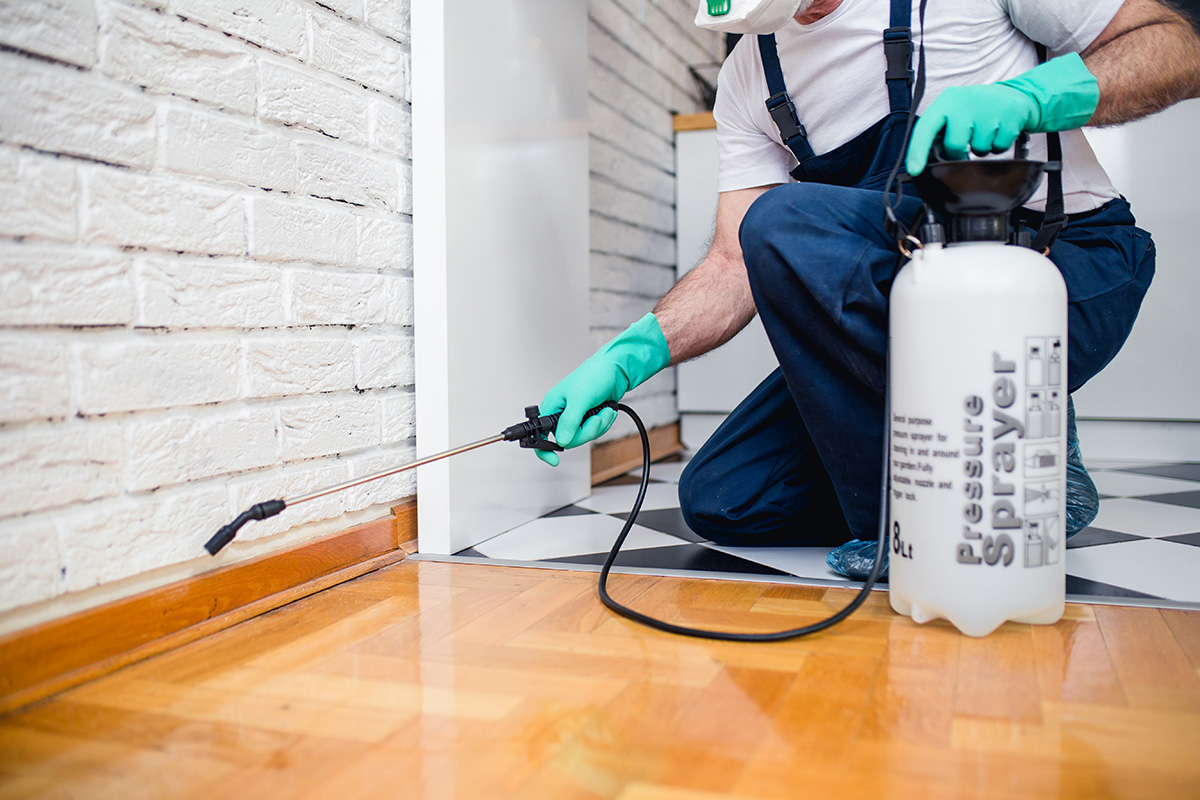Expert A1 Charlotte Bed Bug Exterminator - Quality Service Assured
Wiki Article
Bed Insect Treatment Failure: Comparing Chemical Vs. Non-Chemical Solutions
In the realm of pest control, especially when managing the persistent concern of bed bugs, the option in between chemical and non-chemical treatment options can be a critical one. Both strategies provide distinctive advantages and downsides, affecting aspects such as effectiveness, security factors to consider, and general cost. By checking out the nuanced information of each approach, a more clear understanding of which course to pursue in resolving a bed pest infestation can be achieved.Efficiency of Chemical Treatments
Chemical therapies for bed pest problems have actually been widely recognized for their powerful and quick efficiency in eradicating these insects. When considering the efficiency of chemical treatments, it is essential to comprehend that they can offer a comprehensive and fast remedy to a bed insect problem. Specialist pest control men often depend on pesticides to target bed bugs at various phases of their life process, including adults, eggs, and fairies. These chemicals usually function by interrupting the bed bugs' nerves, resulting in paralysis and eventual death.Moreover, chemical therapies have the benefit of using residual impacts, meaning that they can continue to remove bed bugs even after the initial application. This residual activity is especially beneficial in combating any kind of possible re-infestations. Furthermore, the fast action of chemical therapies can bring relief to individuals encountering extreme bed pest problems, allowing them to gain back control of their living rooms swiftly.
Safety Worry About Chemical Solutions
One essential aspect that requires careful factor to consider when utilizing chemical remedies for bed insect therapy is ensuring the safety and security of owners and the environment. Direct exposure to certain chemicals made use of in bed bug treatments can lead to respiratory problems, skin inflammation, or various other unfavorable reactions, particularly in people with pre-existing conditions or sensitivities.Additionally, the ecological influence of chemical solutions is another considerable consideration. Some chemicals made use of in bed bug therapies may be unsafe to beneficial insects, wild animals, and ecological communities if they seep right into the soil or water supply. It is necessary to make use of chemical therapies deliberately, complying with security standards, and taking into consideration less toxic options to minimize these risks and make certain the effective and secure monitoring of bed bug problems.
Benefits of Non-Chemical Approaches
Thinking about the potential security problems and environmental influence linked with chemical options for bed pest treatment, discovering non-chemical strategies provides an encouraging choice with several distinct advantages. Non-chemical techniques offer a more secure option for houses, particularly those with pets, youngsters, or individuals conscious extreme chemicals. These methods eliminate the risks of direct exposure to hazardous compounds, reducing the possibility for damaging health and wellness effects. In addition, non-chemical treatments are eco-friendly, as they do not contribute to air or water pollution, making them a lasting option for parasite control.In addition, non-chemical services can be effective in targeting bed bugs, consisting of hard-to-reach areas where chemical treatments may not penetrate - A1 pest control services charlotte. Techniques such as warmth treatment, vacuuming, vapor cleaning, and bed mattress encasements offer comprehensive elimination without the use of dangerous chemicals.
Limitations of Non-Chemical Treatments

Additionally, non-chemical therapies often require numerous applications to attain successful elimination. This can be taxing and may not constantly ensure total removal of all bed bugs and their eggs, specifically in hard-to-reach or hidden areas.
In addition, the success of non-chemical therapies heavily depends on correct application and thoroughness, which can be challenging for individuals without expert proficiency. Poor application of non-chemical approaches may lead to insufficient elimination, resulting in consistent problems and the requirement for additional therapies.
For that reason, while non-chemical therapies have their advantages, it is important to recognize these limitations and consider them when identifying one of the most reliable method for handling bed bug problems.
Expense Comparison: Chemical Vs. Non-Chemical Options
Provided the constraints connected with non-chemical treatments, an essential element to review in the context of bed pest administration is the cost comparison between chemical and non-chemical alternatives. Chemical treatments typically entail the application of pesticides by experts, which termidor termite treatment can vary from $250 to $900 per area, depending upon the severity of the invasion and the dimension of the area to be treated. In contrast, non-chemical therapies like warmth therapy or steam can be much more pricey, with expenses varying from $1,000 to $6,000 for a whole home. While the initial price of chemical treatments might appear lower, several treatments might be called for to totally remove the infestation, possibly boosting the general cost. On the other hand, non-chemical alternatives may supply an extra environmentally friendly and lasting solution, although they click can be cost-prohibitive for some people. Eventually, when considering the cost of bed pest therapy choices, it is very important to evaluate the upfront expenses against the effectiveness and long-term sustainability of the picked method.Final Thought

Considering the prospective safety issues and environmental effect linked with chemical services for bed bug treatment, discovering non-chemical strategies offers a promising alternative with numerous distinctive benefits.Given the limitations connected with non-chemical treatments, a necessary aspect to assess in the context of bed insect monitoring is the price comparison between chemical and non-chemical choices. In comparison, non-chemical therapies like warmth treatment or steam can be a lot more pricey, with costs varying from $1,000 to $6,000 for a whole home. While the initial cost of chemical treatments might appear lower, several treatments may be needed to totally get rid of the infestation, possibly increasing the total price.In final thought, when contrasting chemical and non-chemical bed bug therapy options, it is vital to take into consideration effectiveness, security, advantages, restrictions, and price.
Report this wiki page